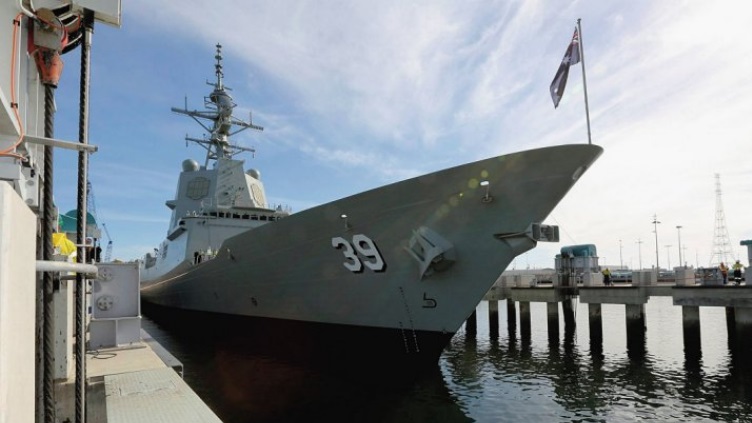
Australia’s state owned shipbuilder ASC launched the first of a new class of guided missile destroyer for the Royal Australian Navy (RAN) last week a day after after a new government statement outlined additional delays and cost overruns in the three ship program.
The 7,000-ton Hobart (DDGH-39) entered the water at ASC’s Adelaide on May 23, days after a recently completed government audit estimated costs for the $7.2 billion program would grow by an additional $932 million and delivery of the ships — already two years late — would be an additional year late, according to joint statement made by Australian Finance Minister Mathias Cormann and Defense Minister Kevin Andrews.
“The most reliable estimates now suggest that the [Air Warfare Destroyers] project will require an additional $1.2 billion to be completed, which will have to be funded at the expense of other Defence acquisitions,” read the May 22 statement.
“The issues associated with this important program have been widely reported and were part of the legacy of unresolved issues, which the Government inherited from the previous Labor government.”
First-in-class Hobart is now slated to deliver sometime in June of 2017, second ship Brisbane in September of 2018 and Sydney in 2020.
The ships, based around the Lockheed Martin Aegis Combat Systems and includes a SPY-1D air search radar, a 48-cell Mark 41 Vertical Launch System capable of fielding Raytheon Standard Missile 2s and the RIM-162 Evolved SeaSparrow Missile (ESSM).
Also in the statement, the pair said the government would seek to bring in another contractor to help ASC complete the lagging Hobart program ahead of a larger evaluation of the RAN’s larger naval construction enterprise.
“The Government will begin a limited tender process on 29 May 2015, seeking proposals to either insert a managing contractor into ASC for the remainder of the AWD build or to further enhance ASC capability through a partnering arrangement,” read the statement.
Australia is also in the early stages of replacing its aging six Collins-class diesel electric attack boat (SSK) and a new frigate design.
“With no timeframe given for the duration of a possible partnering arrangement with ASC, the implications for industry contenders in upcoming programmes such as Sea 1000 (Future Submarine) and Sea 5000 (Future Frigate) are as yet unclear,” reported Jane’s Defence Weekly on Tuesday.
The Hobart program has been a lighting rod for political angst in Australia.
Last year, former defense minister David Johnston drew the ire of Australian ship builders when he was highly critical of the state owned ASC.
“You wonder why I’m worried about ASC and wonder what they’re delivering the Australian taxpayer? You wonder why I wouldn’t trust them to build a canoe?,” Johnston said before the Australian Senate in November.





